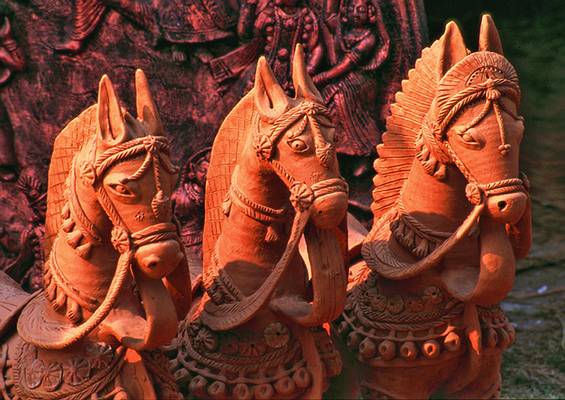
Tamil Nadu is a state located in the southernmost part of India, known for its rich cultural heritage, vibrant traditions, and historical significance. It is one of the oldest and most historically rich regions in India, with a deep-rooted connection to the Dravidian civilization. The state’s name, Tamil Nadu, translates to “The Land of Tamils,” emphasizing its central role in the preservation and promotion of Tamil language, culture, and heritage. The state is also renowned for its contributions to art, literature, architecture, music, and spirituality.
Tamil Nadu is bordered by the Indian states of Kerala to the west, Karnataka to the northwest, and Andhra Pradesh to the north. To the east, it faces the Bay of Bengal, providing it with a long coastline, which has historically been a hub for trade and cultural exchange.
Historical Facts of Tamil Nadu
Tamil Nadu has a rich and ancient history that dates back thousands of years, with its roots tracing to early Dravidian civilizations.
Prehistoric Era and Early History (Pre-300 BCE)
- The earliest evidence of human habitation in Tamil Nadu dates back to the Paleolithic period. Archaeological sites like those at Payyampalli and Tirunelveli have yielded evidence of ancient settlements.
- Meghadambha inscriptions suggest the presence of early Dravidian-speaking tribes.
Sangam Period (3rd Century BCE – 3rd Century CE)
- The Sangam period is a critical era in Tamil history, characterized by the flourishing of Tamil literature, arts, and culture. It was a time when Tamil kingdoms were at their peak.
- The Chola, Cheras, and Pandyas were the major dynasties of the time. The works of the Sangam poets document the social, cultural, and political life during this period.
- Tamil literature from this period is one of the oldest in the world and includes the Eighteen Greater Texts and the Eight Anthologies.
The Chola Empire (9th to 13th Century CE)
- The Chola dynasty is one of the most notable empires in the history of Tamil Nadu. Under the rule of kings like Rajaraja Chola I and Ranjendra Chola I, the empire expanded across South and Southeast Asia.
- The Cholas were great patrons of art, literature, and architecture, building magnificent temples such as the Brihadeeswarar Temple in Thanjavur, which is a UNESCO World Heritage Site.
- The Cholas also played a significant role in the development of Tamil culture, especially through the construction of large-scale temples and their contributions to the Tamil language and literature.
The Pandya Dynasty (6th Century BCE – 16th Century CE)
- The Pandya dynasty, contemporaneous with the Cholas, ruled southern Tamil Nadu. They are famous for their trade relations with the Roman Empire and later the Arabs.
- The Meenakshi Amman Temple in Madurai, one of the most famous temples in India, was built during the Pandya era.
- The Pandya kings were also known for their patronage of Tamil literature and culture.
The Vijayanagara Empire (14th – 17th Century)
- During the decline of the Pandya and Chola kingdoms, the Vijayanagara Empire rose to power in southern India. Although based in present-day Karnataka, the empire controlled large parts of Tamil Nadu.
- The empire’s reign led to the flourishing of Tamil architecture and art, influencing the development of temples and towns in the region.
- The Hampi style of architecture seen in Tamil Nadu during this period is a testament to their influence.
Colonial Period (17th Century – 1947)
- Tamil Nadu, like much of India, fell under British colonial rule. The region’s strategic ports, such as Chennai (Madras), became vital to British trade.
- During the colonial era, Tamil Nadu witnessed several uprisings, including the Polygar Wars (17th to 18th centuries) and the Indian Rebellion of 1857.
- The British also introduced educational reforms that led to the rise of the Tamil middle class and the promotion of Tamil literature and language.
Post-Independence and Modern Era
- After India gained independence in 1947, Tamil Nadu became an important state within the Indian Union.
- The state has played a key role in shaping modern Indian politics, with the rise of regional political parties like the DMK (Dravida Munnetra Kazhagam) and AIADMK (All India Anna Dravida Munnetra Kazhagam), both of which were instrumental in the Dravidian movement for social justice, equity, and Tamil pride.
- The state continues to be a major hub for economic, industrial, educational, and cultural development in India.
Cultural Significance
Language and Literature
- Tamil is one of the oldest surviving classical languages, with a rich literary tradition that spans over two millennia.
- The Tamil language boasts an extensive body of classical literature, including the Sangam literature, which is revered for its poetic beauty and philosophical depth.
Art and Architecture
- Tamil Nadu is renowned for its monumental temple architecture, especially the grand temples built during the Chola, Pandya, and Vijayanagara periods. These temples feature intricate carvings, towering gopurams (gateway towers), and extensive sculptures.
- The Chola bronzes are globally celebrated for their artistry and are considered masterpieces of Indian sculpture.
Music and Dance
- Carnatic music, the classical music tradition of South India, originated in Tamil Nadu and continues to thrive globally. Renowned composers like Thyagaraja, Muthuswami Dikshitar, and Shyama Shastri contributed significantly to the tradition.
- Bharatanatyam, one of the oldest classical dance forms, originated in Tamil Nadu. It combines expressive dance with music, mythology, and religious themes.
Cuisine
- Tamil cuisine is diverse, with an emphasis on rice-based dishes, lentils, and a wide variety of spices. Famous dishes include idli, dosa, sambar, chettinad cuisine, and filter coffee.
Festivals and Religion
- Tamil Nadu is a land of religious diversity, with Hinduism being the dominant religion. The state is home to some of India’s most revered temples, such as the Meenakshi Temple in Madurai, the Ramanathaswamy Temple in Rameswaram, and the Brihadeeswarar Temple in Thanjavur.
- Tamil Nadu celebrates various festivals such as Pongal, Deepavali, and Thaipusam, which reflect its deep religious and cultural roots.
Tamil Nadu, with its rich historical past and vibrant culture, is one of India’s most important states. From ancient kingdoms to modern political movements, its impact on the country’s history and culture is immense. The state continues to preserve its traditions while embracing modernity, making it a unique and fascinating place in India’s cultural landscape.
INDIAINNINGS
Campaigns
- Diwali Special
- Independence Day Celebrations
- Holiday on Holi day
- New Year Specials
Help
- Order Tracking
- Terms & Conditions
- Privacy Policy
- Tutorials
- FAQ
Help
- Facebook Chat
- Whatsapp Help
- E-mail Support
- Contact



